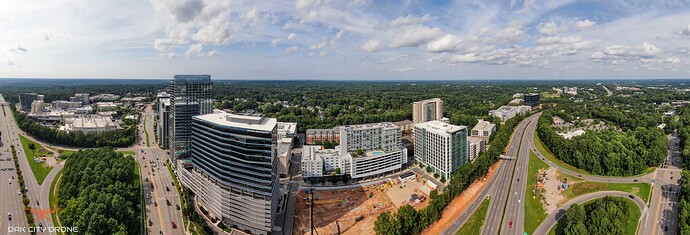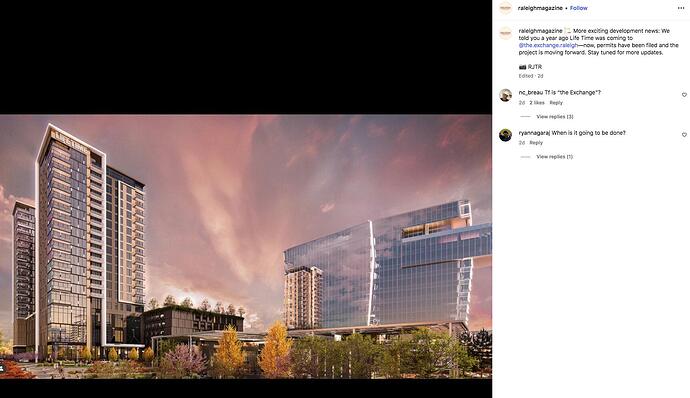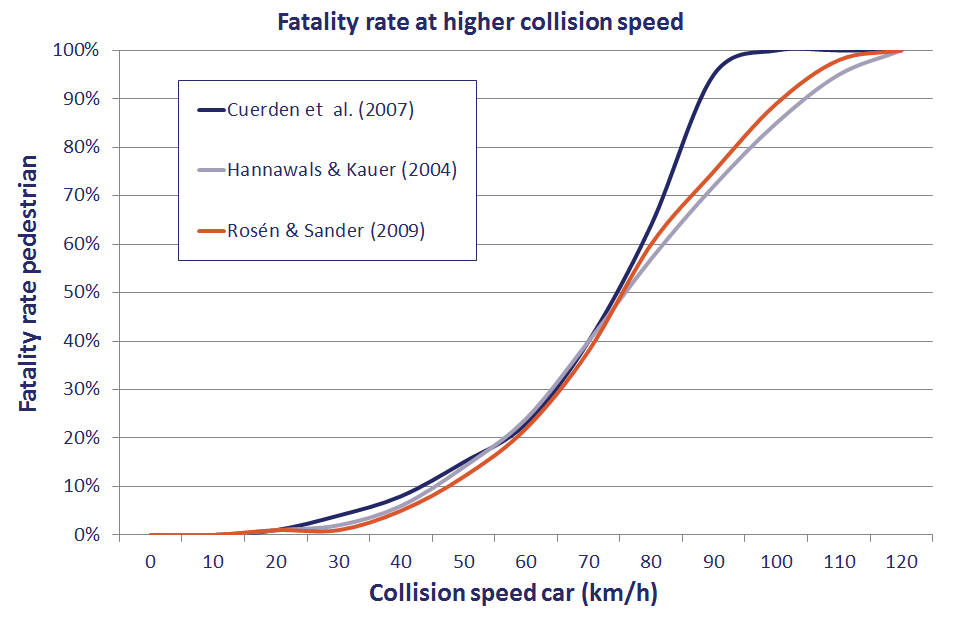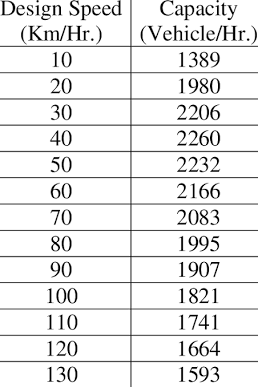I believe this will be The Strand? Great pictures!
“A top-level speakeasy, exclusive to penthouse residences”
Well that seems like a brave business model.
Hi, can I come in your overpriced bar and give you my money?
No, you peasant! You live in a 10,000 sq ft mansion in north Raleigh. Only people who want to live in a penthouse overlooking a highway and a parking lot can get in here!
I could potentially be hallucinating, but I SWEAR I saw something pop up on social media over the weekend that site plans had been submitted for the LifeTime residential tower as part as Midtown Exchange site. I have tried to verify this online this morning, but so far am coming up with nothing. Did anyone else see this, or is senility starting to set in? ![]()
Nope I saw that somewhere too, you ain’t growing crazy lol
You’re not losing it… Raleigh Magazine (for whatever that’s worth) posted that permits have been filed for this Life Time residential tower at Midtown Exchange
NH Central rezoning application to be re-filed in August, per TBJ. Details still under wraps, but “hosting a community open house on July 30”.
It’ll be interesting to see how the neighborhood responds to increased density now that the Six Forks widening project has been cancelled. I’m still a bit puzzled by the trend of homebuilders tearing down existing houses to construct large single-family homes sometimes over $4M. You’d expect to start seeing more “missing middle” housing options pop up especially with the growing need for more attainable new construction, given that nearly everything going up nearby is $2M or more
Considering I still own a townhouse in the area, and pretty pissed off how the Six Forks rd project evolved. I will be feverishly voting NO on this whenever given the chance.
You know the widening wouldn’t have solved or even helped the congestion problem right? It would have been money shredded, nothing more than that.
The added density from this rezoning will only reinforce what is already happening in NH: more people are living in the area but congestion isn’t getting worse because services are walkable. Someone wrote a letter to the editor (maybe TBJ) recently patting Raleigh on the back for saying no to the widening project, on the basis that traffic hasn’t gotten worse in the last 20 years despite the development.
The Six Forks project was ill-conceived from the start. You don’t have to be opinionated about traffic philosophy to oppose it. What they need are sidewalk improvements, especially at Carroll Middle School, and a pedestrian bridge over Six Forks (or tunnel underneath) that the City should have required Kane to build from the outset.
The article in question is by Ted Van Dyk, and it’s probably paywalled at TBJ. I don’t entirely agree with his logic. Yes, traffic in the downtown grid hasn’t suffered from paralysis as the worker population in downtown has increased. But downtown can be reached from every point on the compass and the employment centers are fairly well spread out. The problem is that with only three exceptions (Glen Eden, Lassiter Mill and Atlantic Ave – only one of which is more than two lanes), traffic cannot get from one side of the northern arc of 440 to the other without passing through intersections. If you work at North Hills and don’t live there – and of course, most people who work there don’t live there – you don’t have as many options to get there as you would for a downtown job. And GoRaleigh is basically useless in north Raleigh.
Or to put it differently, what would downtown traffic look like if there was Berlin Wall built along Fayetteville Street with just a few penetrations.
The purpose of road expansion is not to alleviate congestion. That’s a red herring. The purposes are to improve safety and to increase capacity. Whether those purposes are actually achievable in a given project is design-dependent.
This is a fact, you do not improve safety for anyone by widening a roadway, unless it’s to increase non-motorized traffic. That’s a very big distinction and I feel like it’s important to mention.
The project as it was proposed was a macrocosm generated by council members trying to appease two opposing parties: pedestrians and occasional brave bikers and drivers who want to get to point a to point b in an unrealistic time.
You don’t add vehicle lanes to unsafe roadways and add bike lanes just to put a bandaid on a partially attached limb. You should instead decrease vehicle lanes and add bike lanes and separate sidewalks to increase safety for everyone.
You’re making blanket statements that may be true sometimes but not always. A perfect example is underway at this moment, the re-do of the Falls of Neuse interchange with 540 and the Litchford and Durant intersections north of there. The interchange couldn’t handle the number of cars exiting eastbound 540 onto northbound FoN. As a result, cars were backing up onto the right-most lane of 540 for quite a distance… not a good idea on a highway with a 70 mph speed limit. The new interchange won’t have this problem although I admit it’s an expensive fix.
The underlying problem is that the design of the northern arc of 540 was stale when construction began. The same problem is about to happen at eastbound 540 and Buffalo Road.
Time and time again, nearly 30+ years of research is proven correct when newly widened highways become congested shortly after their completion.
As a regional planner who’s analyzed countless local data regarding traffic safety, widening highways and roadways for vehicles is making roadways in the triangle less safe for all road users.
I would think that they are making more money off the 4M+ houses than they would off of missing middle duplex or triplex. I suspect that a developer might think differently if they were able to assemble some contiguous properties. I have fantasies about redeveloping that run of SFHs across Lassiter Mill from North Hills into a double strip of row houses. I think that would bring a nice vibe to the Midtown area.
The problem with the absolutist position is that it takes one to an absurd place – unless one accepts the premise that high-density urban living is utopia for everyone. I suppose we could turn Glenwood, Millbrook, New Bern, Western, South Wilmington, etc back into two lanes as they were in 1940; and we could plow up I-440 and I-540 to make linear parks with bus lines through them. The vision is idyllic to some, but it’s politically unachievable. The road widening argument is mostly moot in Raleigh anyway; as we saw at NH, regardless of their merits or lack thereof, the proposals are impossibly expensive to execute. Nobody is going to stop the completion of I-540 because there is too much money to be made in developing the outermost land. Most of the road-widening has moved to the boundary of Wake County and into the adjacent counties where the urbanist vision gets little mindshare. If those people wanted the urbanist vision and could afford it, they’d be piling into Raleigh ITB.
It’s the same logic that says if we want to make roads safer, reduce the speed limit. Sure, that’s sensible. Why stop at 25 for residential streets? My street would be even safer at 10. Let’s cut Glenwood to 25 and I-440 to 35. Good luck with that.
I’ve spent a lot of time in London and Tokyo. I love that lifestyle when I’m on an expense account. If I had to live there, not so much. I’d be riding a train for 90 minutes in the morning and again for 90 minutes at night, as do my local workmates who aren’t millionaires.
NC poorly planned for the amount of people who have moved here and will continue to.
540 was/is being built to keep people from driving all the way into Raleigh and using the Beltline, or using rural roads to get to other highways. Unfortunately these ring roads bring about sprawl, which can create a cycle like what has happened in Houston.
You are correct that widening existing highways does not work, especially after 4 lanes. Atlanta’s “Freeing the Freeways” program and the Katy Expressway are the best examples of this. The best solution is increased density and mass transit. Unfortunately no one wants to confront the social issues that discourage investment in public transit. For now, the best solution is having developments like North Hills that encourage walking and reduced car usage.
I’m a pretty strong believer that arterials should be 35 rather than 45, and neighborhoods and downtown should be 20 rather than 25 for two reasons: pedestrian fatality rate, which increases quite quickly with speed, and the fact that this range, 20-40mph, is optimal for traffic capacity (in terms of real vehicles per hour). Believe it or not, traffic capacity for surface streets actually peaks somewhere around 30 mph!



